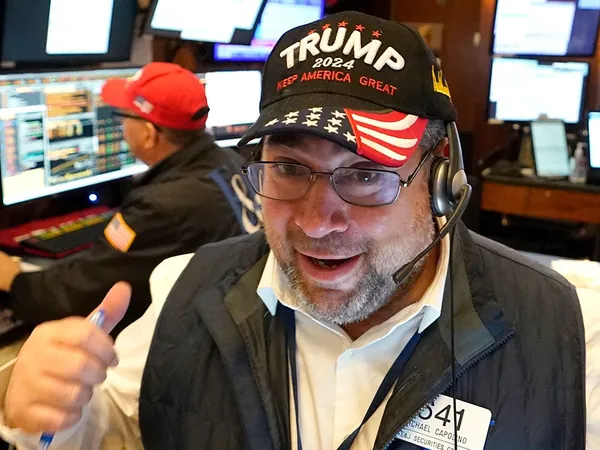
The Truth Behind the Trump Stock Market Rally: A Closer Look
2024-11-12
Author: Amelia
The stock market has been surging since Donald Trump emerged victorious in the recent United States elections. In the wake of the election, the S&P 500 index experienced its best weekly performance in a year, soaring by an impressive 4.7% and breaking the significant barrier of 6,000 points for the first time.
David Rosenberg from Rosenberg Research & Associates noted that the investor behavior following Trump's victory is even more speculative than the reactions observed after his 2016 win. "The surge we are seeing now is more pronounced than what occurred eight years ago," he remarked.
Analysts are divided on whether this "Trump trade rally" is grounded in solid economic fundamentals or if it's merely a short-lived frenzy. Market strategist Ed Yardeni predicted that the "animal spirits" unleashed by Trump’s administration could propel the S&P 500 to an astonishing 10,000 by the end of the decade. He has adjusted his projections upward to 6,100 for the current year, 7,000 for 2025, and 8,000 for 2026, emphasizing the market's excitement over the anticipated pro-business policies, tax cuts, and deregulation.
A Bank of America survey revealed a significant shift in investment strategies post-election, with fund managers now more heavily invested in U.S. stocks than they have been since 2013. The share of those overweight in U.S. stocks has nearly tripled, signaling a wave of optimism among investors.
However, some experts are cautioning against assuming a direct correlation between Trump's presidency and stock market growth. Hubert de Barochez, a senior market economist at Capital Economics, acknowledges the likelihood of substantial market gains but attributes this not to Trump's leadership but rather to broader economic factors.
De Barochez argues that Trump's policies, particularly in tariffs and immigration, may actually hinder corporate profitability and growth prospects. Furthermore, he is skeptical about the administration’s ability to implement promised tax cuts, which are a critical driver of the current market rally.
Interestingly, Capital Economics has maintained a bullish outlook on stocks, projecting that the S&P 500 could reach 7,000 by the end of 2025—though they believe this uptick is largely driven by advancements in artificial intelligence rather than governmental policies.
As the rally continues, de Barochez warns that once the S&P hits that predicted 7,000 mark, it may signal a bubble burst. He anticipates that the returns from U.S. equities could decline during Trump's second term, with underperformance only partially attributable to the policies put forth by his administration.
In addition to the stock market dynamics, recent data highlights economic uniformity across Canada. The gap in provincial GDP growth is at its narrowest in 30 years, reflecting shared challenges like inflation and rising interest rates. Meanwhile, real estate and mortgage sectors remain vibrant, with experts advising on alternative investment avenues as guaranteed returns decline.
As the world watches the evolving economic landscape under Trump's influence and the subsequent effects on both U.S. and global markets, the dynamics at play remain complex and multifaceted. Investors are urged to perform thorough analyses before jumping on the seemingly lucrative bandwagon.









 Brasil (PT)
Brasil (PT)
 Canada (EN)
Canada (EN)
 Chile (ES)
Chile (ES)
 España (ES)
España (ES)
 France (FR)
France (FR)
 Hong Kong (EN)
Hong Kong (EN)
 Italia (IT)
Italia (IT)
 日本 (JA)
日本 (JA)
 Magyarország (HU)
Magyarország (HU)
 Norge (NO)
Norge (NO)
 Polska (PL)
Polska (PL)
 Schweiz (DE)
Schweiz (DE)
 Singapore (EN)
Singapore (EN)
 Sverige (SV)
Sverige (SV)
 Suomi (FI)
Suomi (FI)
 Türkiye (TR)
Türkiye (TR)